Chronometer and Chronograph – What’s the difference?
If you’re a newbie to the wonderful world of horology, you’ve probably heard of the terms "chronometer" and "chronograph". These two words contain "chrono" in them so they have to be related in a way, do they? Maybe you’ve heard the salesperson at the mall watch store trying to point out the Seiko you’re looking at has a chronometer that can time events. Or your friend comes up to you with a new watch and saying, "Hey, check this out – it’s got a chronometer!"
Did that sound right to you? If you’re not sure, then read on. 🙂
First off, let’s get the facts straight. While both words sound almost similar and they’re horology related, in fact they don’t mean the same thing.
A chronograph is simply a watch with a built-in stopwatch feature. It’s likely to have one or more sub-dials or a small liquid crystal display (LCD) panel to keep track of the elapsed time. Chronographs have extra pushers in addition to the crown for the stopwatch start/stop and reset functions.
A chronometer is a very accurate (usually) mechanical watch with a high grade movement. The movement has been finely adjusted at the factory in several physical positions and temperature environments. A chronometer is almost always accredited and certified by either the watch manufacturer or by independent standards laboratories such as the Swiss based COSC (Contrôle Officiel Suisse des Chronomètres). Rolex is probably the world’s most well known chronometer certified watch.
In other words, a chronometer may not necessarily be a chronograph and a chronograph may not necessarily have the qualifications of a chronometer. However, it’s possible for a chronograph watch to have a chronometer status.
OK, now that we’re clear with both terms, let’s explore the chronometer and the chronograph in a bit more depth.
What’s a chronometer?
A chronometer was originally intended for timekeeping purposes where extreme precision and accuracy is required. Examples include navigational and transportation applications like sea faring ships and railroad systems.
They were essential to aid marine navigation at sea and for railroads, to prevent accidents like the infamous 1891 railroad train collision in Kipton, Ohio USA.
Back then, automated train monitoring centers and wireless radio communication didn’t exist yet. The U.S. and Canadian railroad networks adopted the Timetable and Train Order system was ensured that no two trains are travelling on the same track at any one time.
The system was highly dependent on precise time synchronization between trains and tragically the crash was caused by a malfunctioning engineer’s watch. As a result the North American railroad industry commissioned its General Time Inspector, Webb C. Ball to find ways to a common standard for pocket watches and clocks for trains and stations.
Mr Ball was also a watchmaker and was the first jeweler to adopt time signals from the United States Naval Observatory to bring accurate time to Cleveland where he had settled down. That’s right, if you’ve heard of the famous Ball Watch of Switzerland and didn’t know how it got its name from, now you do.
"He established strict guidelines for the manufacturing of sturdy, reliable precision timepieces, including resistance to magnetism, reliability of time keeping in 5 positions, isochronism, power reserve and dial arrangement, accompanied with record keeping of the reliability of the watch on each regular inspection.
Ball’s requirements for a chronometer-grade pocket watch were:
only American-made watches may be used (depending on availability of spare parts)
only open-faced dials, with the stem at 12 o’clock
minimum of 17 functional jewels in the movement, 16 or 18-size only
maximum variation of 30 seconds (approximately 4 seconds daily) per weekly check
watch adjusted to five positions (face up, face down, crown up, crown down, or sideways)
adjusted for severe temperature variance and isochronisms (variance in spring tension)
indication of time with bold legible Hindu-Arabic numerals, outer minute division, second dial, heavy hands,
lever used to set the time (no risk of having the stem left out, thus inadvertently setting the watch to an erroneous time)
Breguet balance spring
micrometer adjustment regulator
double roller
steel escape wheel
anti-magnetic protection (after the advent of diesel locomotives)
jim-proof
The Waltham Watch Company complied immediately with the requirements of Ball’s guidelines, later followed by Elgin Watch Company and most of the other American manufacturers, later on joined by some Swiss watch manufacturers". (Source: WikiPedia).
A Ball Engineer Master II diver’s chronograph
While Mr Webb Ball pioneered the chronometer standard in pocket watches, the original chronometer was as in fact, a large mechanical watch encased in a wooden box.
It was invented and perfected by John Harrison in England in 1761 to counteract the constant gyrations and movement of a ship at sea, which rendered pendulum clocks useless. In addition, changes in temperature and humidity also affected the accuracy of pendulum based clocks.
With the H4 marine chronometer, Harrison also solved the Longitude problem, which required a precise timekeeping device so that a ship’s crew could calculate their exact longitude at sea.
For every 15° that one travels eastward, the local time moves one hour ahead. Similarly, travelling West, the local time moves back one hour for every 15° of longitude.
Therefore, if we know the local times at two points on Earth, we can use the difference between them to calculate how far apart those places are in longitude, east or west.
This idea was very important to sailors and navigators in the 17th century. They could measure the local time, wherever they were, by observing the Sun, but navigation required that they also know the time at some reference point, e.g. Greenwich, in order to calculate their longitude. (Source: National Maritime Museum)
An antique Breguet Marine Chronometer (photo from Wikipedia)
The modernization of the chronometer
In modern times, marine chronometers have been replaced by quartz clocks which can synchronize with atomic clock time signals via radio waves. You also have satellite navigational systems like GPS (Global Positioning Satellite), so charting your course at sea should be a piece of cake.
Chronometers weren’t always mechanical. When quartz technology was embraced by the horology world, portable desktop chronometers became available in the mid 1960s. These early battery powered quartz chronometers were costly and it meant it was usually beyond the reach of the average consumer.
The Seiko QC-95 (below) for example, cost about USD795, roughly equivalent to a year’s salary for an average Japanese working man in the mid 1960s!
A 1964-era Seiko Crystal Chronometer. It uses a regular "D" size cell which powers it up to one year.
Back on topic, I think wrist watch chronometers are meant for enthusiasts who buy them for the personal enjoyment of owning one rather than for accurate timekeeping. A USD50 Casio or Pulsar quartz watch can easily beat a USD5,000 mechanical watch when it comes to raw accuracy but that’s not the point in owning a chronometer certified wat ch. 🙂
Japanese watch companies like Seiko and Citizen do have chronometer-grade watches but they do their own in-house certification instead of submitting their movements to a foreign independent body like COSC. Seiko used to send their movements to COSC in the mid 60s but then stopped the practice altogether.
Every Grand Seiko 9s55 automatic like the SBGR023 comes with its individual chronometer certification from the Seiko factory (borrowed photos)
Seiko for example, has been making high precision watches since the early days of the its prized V.F.A. (Very Fine Adjusted) movements. From its King Seiko Chronometer grade Cal 5625 automatic to its present day, 9s5x flagship caliber used in its Grand Seiko line Seiko adhered to its own set of standards slightly more stringent than COSC’s.
Instead of tweaking the movement in five positions as practiced by COSC, Seiko adjusted their flagship 9s-series movements in six different positions and in three different temperatures.
Past and Present – Seiko’s vintage Chronometer standard King Seiko 5625 (left) and the new Grand Seiko GMT 9s56 (right).
Is a quartz watch a chronometer?
Now this brings us to a question: Now that we’ve established that a chronometer is a highly accurate watch shouldn’t your inexpensive quartz Casio G-Shock earn a chronometer status too?
Well, not quite. Pitting a quartz timepiece with a 0.5 sec/day variation against a finely tuned mechanical chronometer is like comparing apples to oranges. No doubt that a quartz Casio or Timex is definitely more accurate than the world’s best mechanical chronometer. But then, there’s more to it than just raw accuracy.
Accuracy is one thing, precision is another matter. They are both related to one another but don’t mean the same thing. Precision is related to error deviations and to the ability to reproduce the exact results all the time. Your quartz watch can gain two seconds in a week and lose exactly two seconds in the following week. The result? You have an accurate watch, but it’s still not very precise.
Like mechanicals, quartz watches are also affected by temperature changes but to a smaller degree. Cold room temperatures tend to make quartz watches run a bit slower, while hot temperatures produce the opposite effect. Even if you keep it in a controlled temperature environment, there’s also such thing as oscillator drift. The drift affects the precision of the watch but doesn’t dictate the accuracy of the watch.
Therefore, on different days your quartz watch may run faster or slower and these events can cancel one another, resulting in almost no net gain or loss of time. Quartz crystals also go through their natural ageing process. The older they get over the decades, the less precise they become. The error deviations are small enough not to be that obvious.
Quartz is a piezoelectric oscillator (in a mechanical watch, its equivalent is the escapement) and depending on the quality, it can drift several microseconds a day.
Hardly noticeable in a day but over a period of a month, you’ll notice that your quartz watch can be a few seconds slower or faster than the radio station’s time signal. That said, the higher the oscillation rate, the more precise the quartz is. Standard quartz crystals vibrate (or oscillate) at 32,768 Hertz (or cycles per second).
Photo of a quartz watch circuit (from the Swiss Watch Industry website)
Chronometers are manufactured to remain precise under a wider spectrum of conditions including temperature variations. A quartz chronometer is guaranteed to be more precise than an ordinary quartz watch under the same conditions, for extended periods. One of the techniques employed by quartz chronometers is the use of thermo-compensation. This, coupled with the use of very high grade quartz crystals ensures that temperature deltas and oscillator drift effects are nullified.
More importantly, chronometer grade quartz watches are individually tested and monitored carefully and certified at the factory to meet its specifications. Ordinary mass production quartz timepieces don’t go such procedures (other than the random quality control checks) as it’s time consuming and labor intensive. And they’re very expensive for a quartz watch.
There used to be high end quartz watches with chronometer status but since quartz is already accurate, certifying quartz timepieces nowadays has become rather superfluous. Nobody really needs such ultra-precision timekeeping for personal use. Wearing a quartz watch that’s just five seconds slow in a month doesn’t mean you’re going to show up late for an appointment. 🙂
What’s a chronograph?
A chronograph is a timepiece that has elapsed time keeping abilities by means of a stopwatch. The stopwatch feature is considered a complication. In the strictest horological sense the day/date display is considered a complication, but because almost all analog watches come with at least a date, the calendar is generally not regarded as a complication.
Most chronograph nowadays watches are quartz – it’s simpler to design and cheaper to manufacture compared to mechanical chronographs. The mainstay of Seiko and Citizen’s chronographs are mostly quartz based (including Kinetic and Eco-Drive movements) for simplicity and affordability.
Current Seiko quartz chronograph calibers include the:
-
7T62 (1/5sec stopwatch with alarm)
-
7T92 (1/20sec stopwatch)
-
7T94 (1/5sec stopwatch, date on the left side of the dial)
-
7T82 (1/100sec stopwatch)
-
H023 (1/1000sec stopwatch, analog-digital)
-
H024 (1/1000sec stopwatch, analog-digital)
Top row: SNA141P (7T62), SBDQ001 (7T92), SNN097P (7T94). Bottom row: SPC003P (7T82), SNJ007P (H023), SNJ019P (H024). All images belong to their respective copyright holders.
Present-day Seiko Kinetic chronograph calibers include the:
-
9T82 (1/10sec stopwatch)
-
7L22 (1/5sec stopwatch)
The range topping Sportura SLQ017J 9T82 (left) and the slightly more affordable Prospex SBDV003 7L22 (right) Kinetic chronographs.
The current Seiko automatic chronograph calibers available today are the:
-
6S37
-
6S28
Seiko’s high end automatic 6S37 based Prospex SBDS001 Flightmaster (left) and the Brightz SAGP003 6S28 (right).
Automatic chronographs usually aren’t calibrated to a useful resolution as the stopwatch mechanism is directly regulated by the movement’s beat rate. For example, a 28,800bph movement will divide each second into 8 ticks, therefore every increment of the chrono second hand denotes 1/8th of a second. That’s not a rather practical resolution but then again, mechanical chronographs aren’t meant for precision timing. Quartz controlled chronographs are better for this purpose.
At present, the only Seiko Spring Drive chronograph caliber is the 9R86. It’s Seiko’s most expensive chronograph movement to date and prices start from a jaw dropping USD7,000 and upwards. The 9R86 is an exclusive movement and its status confines it to the high end Grand Seiko range.
The flagship SBGC004 Grand Seiko Spring Drive chronograph in 18ct rose gold with the 9R86 movement. For a cool 2.7 million Japanese Yen (USD25,000), it’s yours!
Citizen also has its own lineup of quartz chronograph watches but its calibers are too numerous to mention. Probably their most prominent caliber is probably its excellent Eco-Drive Caliber 2100 found in their Promaster lineup and some models of their artistic Campanola range. The Caliber 2100 presents a breakthrough in watchmaking standards, incorporating a mechanically actuated chronograph mechanism, similar to Seiko’s 9T82 and 7L22 Kinetic chronograph movements.
More on the Citizen Caliber 2100 chronograph in this post.
The excellent Citizen Promaster E210 AV0031-59A chronograph is perhaps the most recognizable Caliber 2100 model worldwide.
Wrapping Up
So now it should be clearer to you that a chronograph is just a watch with an elapsed timing capability while a chronometer is nothing more than a certified precision timepiece.
The two terms can overlap – it’s possible for Seiko to produce a mechanical chronograph with the chronometer status but due to design and production complexity and meticulous time consuming factory regulation, chronometer-grade watches have just a calendar display. Mechanical chronographs are already expensive to begin with, therefore the end result is a chronometer-grade chronograph that’s too costly for the consumer.
The next time you encounter a watch store sales assistant who confuses a chronometer with a chronograph, you can just smile at him or her and go "Oh, really?" 🙂
Did you enjoy this post? Why not leave a comment below and continue the conversation, or subscribe to my feed and get articles like this delivered automatically to your feed reader.
Comments
Hi Bill,
Thanks for the comment. This post was a rather tough subject for me and took rather a long time to condense the facts. This post deals with “chronometer” as a broad term rather than COSC’s official certification.
Indeed, you are correct as to COSC reserving the use of the word “Chronometer” on timepieces that have been certified by them.
I guess that partly explains why Seiko stopped producing their KS Hi Beat models with “Chronometer” on the dial. 🙂
Quartzimodo.
Hello Quartzimodo,
I’m happy to have had the good fortune to visit your blog-site again & see this article!
One of the finer writings I have read, to establish the differences between the often mis-understood & mis-placed meanings of the two words.
Thanks for the time you have invested into putting together the facts with this fine work, and I’m sure that who ever reads this will clearly understand the points between Chronograph and Chronometer.
A fine Job & Thank You,
Jimmy
Nice info
I have 6 pc of Seiko Crystal Chronometer QC-951 from the Swedish army, they have been working 3 days in my test, if the reserve are working I have not checked yet, the batteri could sometimes be ruined due to the the clock has not been turned of and the reservebattery is flat and distroyed.
one must have a stick in the batterycompartment due to that when you take out the 2 d cells a spring turnes the internal rechargeable battery to work- and in month its distroyed
Do anuone know the value of these , in good condition , workin , in org case, one ore two with org garanti and instructionpapers etc
Regards Hubert
Dear Hubert,
I wish I had one of those vintage Seiko quartz chronometers, but I unfortunately I don’t. 🙁
However, I do know a watch collector from Sweden named Martin, who collects such chronometers. He has almost 300 watches in his collection and is a great guy to talk to. You can read a very interesting post on his Seiko chronometers here.
I am sure he can help you better than I can! 🙂
cheers,
Quartzimodo Admin.


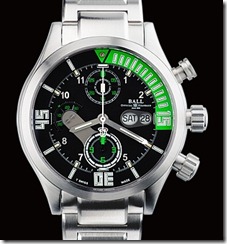
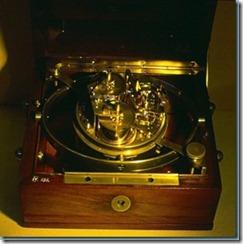
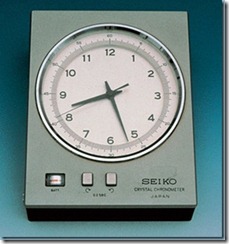
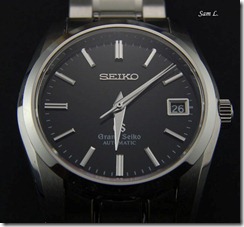
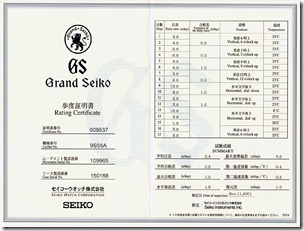
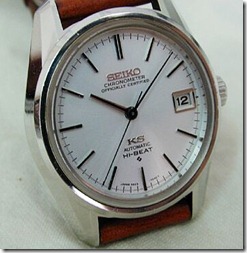
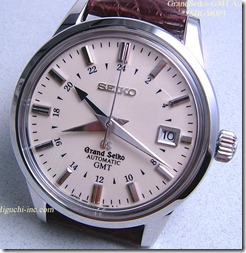
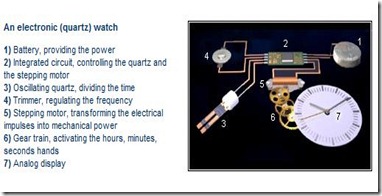
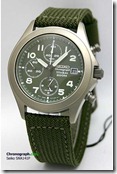
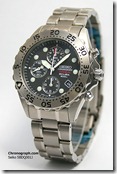
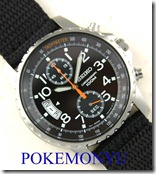
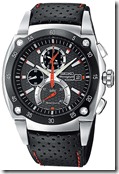
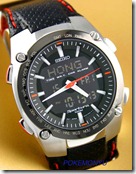
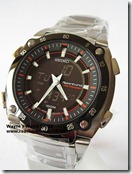
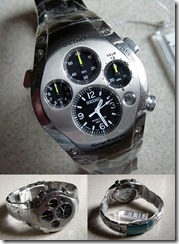
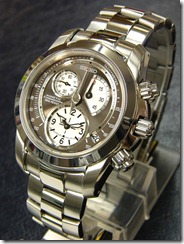
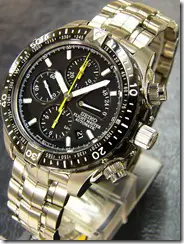
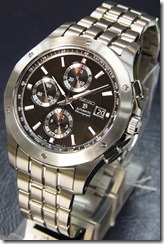
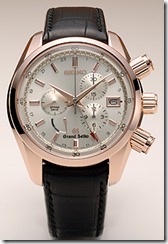
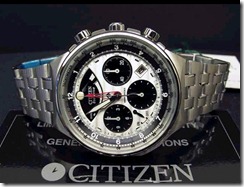
A very good piece! Lots of effort put in here. Thanks Quartzimodo.
One comment:
The word chronometer is a reserved legal term, a trademark for any COSC certified movement in a Swiss-Made watch.
I.E., only those watches can be marketed as chronometers on the market, and have the word chronometer printed on the dial. E.G. Rolex’s “Superlative Chronometer”. Not that Rolex is any more accurate than a non-Rolex chronometer though.
It’s a word game the Swiss play.
There is a separate COSC standard for quartz chronometers. In general, COSC specs are under static conditions.
The word chronometer, loosely used in speech, refers to any watch capable of meeting high precision specs. There are various mechanical standards from the French, Germans (DIN) and Japanese that’re typically more stringent than COSC, either in terms of tolerance or additional parameters such as shock and motion.